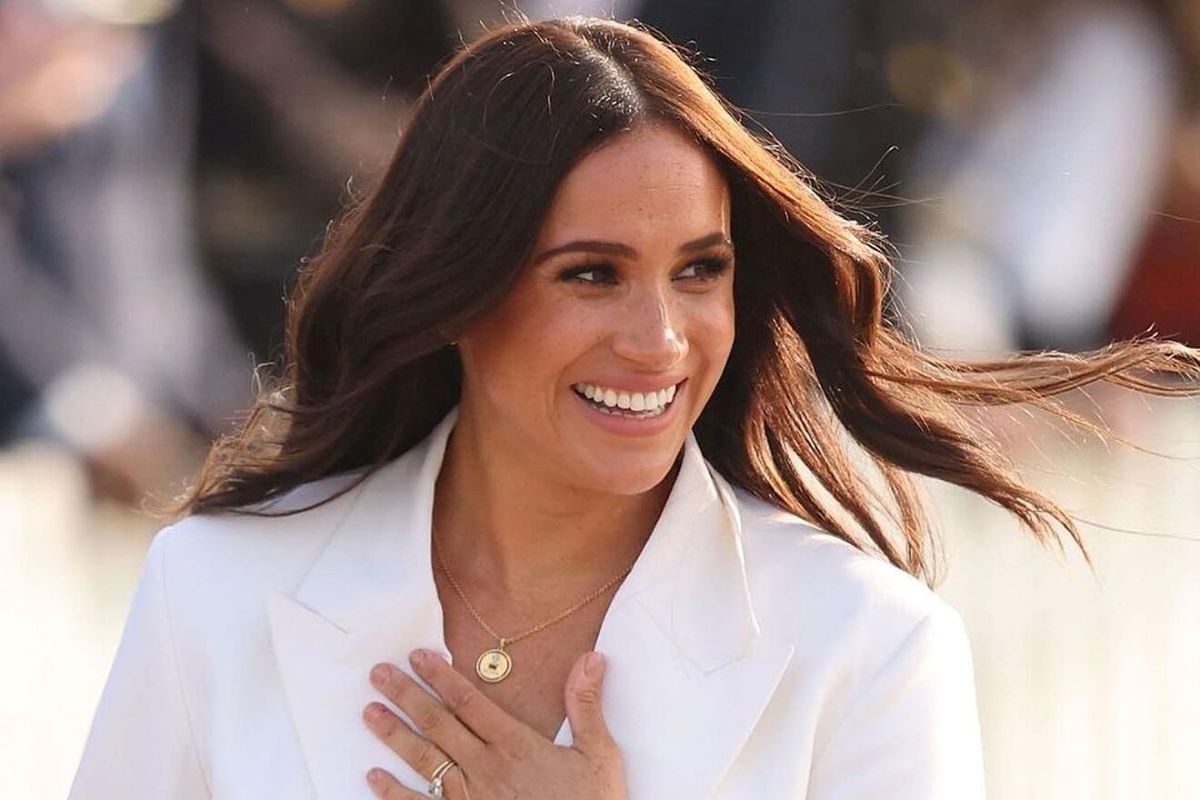Lifestyle
How Meghan Markle Traced Her Nigerian Roots

“I am 43 per cent Nigerian,” the Duchess of Sussex, Meghan Markle, revealed during the week.
She told Nigerian-American, comedian, writer and actor, Ziwerekoru (Ziwe) Fumudoh, that she discovered her roots after having a genealogy (family history) test done a couple of years ago, which showed that her ethnic mixture included being 43 per cent Nigerian.
Meghan is yet to establish exactly which Nigerian tribe her ancestors were from, but the Duchess said she was planning to start to dig deeper.
This revelation, which elicited a chain reaction of responses across the world, was not unexpected.
The Duchess, who married Prince Harry in May 2018, has been in the eye of global attention ever since.
Meghan, who identifies as being of mixed-race heritage, has always admitted that she is half black and half white.
Her father, Thomas Wayne Markle Sr., is from a family of German, English, and Irish descent, while her mother, Doria Loyce Ragland, is African-American.
Genetic ancestry testing, or genetic genealogy, is not as unusual as it sounds. Millions of people who are interested in their family history (genealogy) go beyond what they can learn from relatives or from historical documentation.
A genealogy test could be as simple as taking a cheek swab or saliva sample and analysing it to uncover ethnic mix, and family history, and even build a family tree, and using databases to learn about historic relatives and possibly even connect to living relatives you had no idea existed.
The test involves the examination of DNA variations that can provide clues about where a person’s ancestors might have come from and about relationships between families.
The test is made possible because certain patterns of genetic variation are often shared among people of particular backgrounds.
Essentially, the more closely related two individuals, families, or populations are the more patterns of variation they typically share.
Findings by Saturday Vanguard revealed that generally, results of ancestral DNA tests are 99.9 percent accurate.
The test results are essentially an ethnicity estimate, part of which is an estimate reported as a percentage of ancestry dating back several centuries.
Theories exist that genetically, a person carries more of their mother’s genes than their father’s.
This is because little organelles (mitochondria) that live within the cells, are only received from the mother.
Mitochondria are the energy-producing factories of the cell; without them, a cell would not be able to generate energy from food.
There are generally three types of genetic ancestry testing commonly used for genealogy. These are the Y chromosome testing, Mitochondrial DNA testing, and Single Nucleotide Polymorphisms (SNPs) testing.
The variations in the Y chromosome can is used to explore ancestry in the direct male line, and are often used to investigate questions such as whether families with the same surname are related.
Mitochondria DNA is passed on solely from egg cells so it provides information about the direct female ancestral line.
Hence Mitochondrial DNA testing identifies genetic variations in mitochondrial DNA and can be useful for genealogy because it preserves information about female ancestors that may be lost from the historical record because of the way surnames are often passed down.
For the Single Nucleotide Polymorphisms (SNPs) tests, they evaluate large numbers of individual variations in SNPs across a person’s entire genome.
The results are compared to similar SNPs in a testing database to provide an estimate of a person’s ethnic background.
Genealogists tend to use the SNPs test more because Y chromosome and mitochondrial DNA test results represent only single ancestral lines, and do not capture the overall ancestral background of an individual.
While genetic ancestry testing has a number of limitations, they remain popular and give insight to the discovery of previously unknown relationships.
Combined genetic ancestry test results from many people are used by scientists to explore the history of populations as they arose, migrated, and mixed with other groups.
Among celebrities that have undergone genetic ancestry testing include Academy Award-nominated actress and television mogul, Oprah Winfrey.
She traced her roots back to the Kpelle people, in the West African highlands which are now part of Liberia and Guinea. Winfrey found that she had 8 percent Native American DNA and 3 per cent East Asian DNA.
Rapper Snoop Dogg learned through a DNA test that he is 71 per cent Sub-Saharan African, 23 per cent Native American and 6 per cent European.
Famous actor, director, humanitarian, and philanthropist George Clooney, is actually distantly related to Abraham Lincoln.
An early ancestor of Clooney’s is related to one of Lincoln’s parents and it’s possible to see the genetic impact of the 16th president of the United States on Clooney, who is an active political voice and donor.
Hollywood actress Eva Longoria discovered through genetic testing that she has lots of European ancestries, with a great majority hailing from Spain, 3 per cent African genes, and 27 per cent of her origins being Mexican.
Ellen DeGeneres didn’t initially know her ancestry until she dug deep and found that she was Kate Middleton’s 15th cousin, and also related to Queen Elizabeth II.
Send Us A Press Statement Advertise With Us Contact Us
And For More Nigerian News Visit GWG.NG


